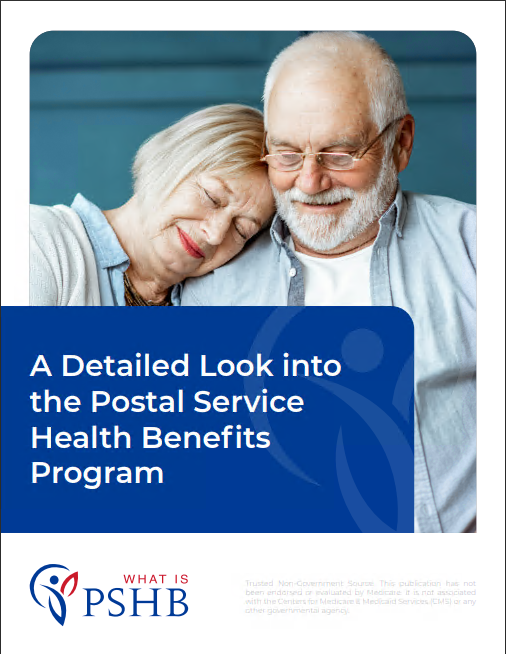Key Takeaways
- The new Postal Service Health Benefits (PSHB) program is set to replace FEHB for USPS workers and retirees in 2025, offering more tailored coverage options.
- USPS workers and retirees need to be aware of critical changes in enrollment processes, eligibility, and plan options as the shift to PSHB approaches.
Everything Postal Workers Need to Know About the New PSHB Program and What’s Changing for 2025
As 2025 approaches, significant changes are coming to the health benefits system for USPS workers and retirees. The Postal Service Health Benefits (PSHB) program will replace the Federal Employees Health Benefits (FEHB) program for postal employees. These changes are aimed at offering tailored health coverage specifically for postal workers. For those currently employed by USPS or retired from the Postal Service, it’s essential to understand what the PSHB program entails and how the upcoming transition will impact their health benefits. With the shift in health plans, it’s crucial to stay informed and plan accordingly.
The Postal Service Health Benefits (PSHB) Program: What is it?
The Postal Service Health Benefits (PSHB) program is a new health coverage system being introduced as part of the broader restructuring efforts for the U.S. Postal Service. Set to launch in 2025, PSHB is designed to meet the specific needs of postal employees and retirees, ensuring that they receive customized health insurance that aligns with their unique working conditions and retirement circumstances. The change is part of the Postal Service Reform Act, which includes provisions specifically focused on overhauling health coverage.
While the Federal Employees Health Benefits (FEHB) program has long been the standard for government workers, the introduction of PSHB marks a major shift for USPS personnel. This new program will operate under the broader umbrella of FEHB, but with its own set of rules and benefits packages tailored exclusively for postal workers.
Why is the Shift from FEHB to PSHB Happening?
The move from FEHB to PSHB is driven by several factors. First, the U.S. Postal Service has unique health coverage requirements compared to other federal agencies due to the size of its workforce and its financial situation. The transition aims to improve financial sustainability for the USPS while still providing comprehensive health benefits to postal employees and retirees.
Moreover, PSHB aims to offer postal workers better-targeted healthcare options that cater specifically to the needs of USPS employees. Given the physical demands and stressors that postal workers face, having a dedicated health benefits program means potentially better-suited plans and coverage for the workforce.
How Will Enrollment Change in 2025?
One of the most significant changes USPS workers and retirees will face is the new enrollment process. Starting in 2025, all postal workers and retirees who were previously covered under FEHB will need to enroll in PSHB to maintain their health benefits. This includes actively enrolling during designated periods, even for retirees who may have been automatically carried over under FEHB in the past.
Additionally, there will be specific deadlines and requirements to meet. It’s important for both current employees and retirees to be aware of these changes to avoid lapses in coverage. For the first time in decades, USPS retirees will also need to coordinate their PSHB enrollment with Medicare if they’re 65 or older.
Medicare Coordination for Retirees
A key change that comes with PSHB is the requirement for USPS retirees to enroll in Medicare Part B once they reach the age of 65. Previously, this was optional under FEHB, but with PSHB, it will be a mandatory part of the benefits package. This coordination is intended to reduce the overall cost of healthcare for retirees, with Medicare becoming the primary payer and PSHB acting as a secondary coverage.
Retirees who are approaching 65 need to be proactive about enrolling in Medicare Part B to avoid penalties or gaps in their health coverage. Failing to enroll on time could result in increased healthcare costs or, worse, a disruption in benefits under PSHB.
What Changes Should Postal Workers Expect in Their Health Plans?
While the exact details of the health plans under PSHB are still being finalized, postal workers can expect some key differences compared to their FEHB plans. These include:
- Tailored Coverage: PSHB will offer coverage options designed specifically with postal employees in mind. This may include more specialized coverage for conditions related to the physical demands of the job or other health factors commonly associated with postal work.
- More Choices: USPS employees and retirees will likely have a wider range of plan options to choose from, giving them greater flexibility to select a plan that fits their individual needs.
- Medicare Integration: For retirees over 65, the mandatory integration with Medicare Part B will change how healthcare expenses are covered. PSHB will function as a supplement to Medicare, potentially lowering out-of-pocket costs for retirees.
Preparing for Open Enrollment in PSHB
With the switch to PSHB on the horizon, it’s critical for USPS employees and retirees to prepare for the upcoming open enrollment period. Unlike in past years with FEHB, where coverage often rolled over automatically, PSHB will require active enrollment. To ensure smooth transitions, postal workers should:
-
Review All Plan Options: Take the time to carefully examine the health plans offered under PSHB. Since this is a new program, it’s important to familiarize yourself with the different levels of coverage and benefits.
-
Coordinate with Medicare: For those nearing 65, understanding how Medicare works in conjunction with PSHB is essential. Be sure to enroll in Medicare Part B if necessary to avoid penalties and ensure seamless coverage.
-
Stay Informed: The details surrounding PSHB are still evolving, and it’s important to stay updated as new information becomes available. Check USPS employee resources regularly and consider consulting with a licensed insurance agent who can offer personalized guidance.
The Importance of Timely Action for Retirees
Retirees, in particular, need to be mindful of the changes PSHB brings. Many postal retirees have relied on FEHB for years and may not have had to make active enrollment decisions recently. However, under the new PSHB program, all retirees must take action during the enrollment period.
Failing to enroll on time could result in losing health benefits or facing higher premiums. Since PSHB is tailored to postal retirees, those who enroll will continue to enjoy comprehensive coverage, but only if they adhere to the new rules and deadlines.
What Does This Mean for Active Postal Workers?
For current USPS employees, the move to PSHB offers the potential for more robust health coverage. However, active workers also need to be proactive. It’s crucial to review the changes in plan offerings, coverage tiers, and premium structures. Since the health needs of postal workers can be unique due to the physical demands of the job, PSHB is designed to offer better-suited plans.
Additionally, for workers approaching retirement, it’s important to start thinking about Medicare enrollment and how that will interact with PSHB. Being prepared and well-informed will make the transition to PSHB smoother and ensure that you’re getting the best possible coverage.
Staying Updated on PSHB Developments
Since the transition to PSHB represents such a significant change, it’s important to stay informed. The USPS will likely provide updates and resources to guide employees and retirees through the process. Make sure to regularly check for new announcements, and consider reaching out to a licensed insurance agent for personalized advice.
Staying engaged and understanding the changes to PSHB will help postal workers and retirees make informed decisions about their health coverage in 2025 and beyond.
Navigating the Transition to PSHB Successfully
In 2025, postal workers and retirees will experience one of the largest shifts in their health coverage in years. By staying informed, taking timely action, and coordinating with Medicare when necessary, USPS employees can navigate the transition to the Postal Service Health Benefits program smoothly. Whether you’re a current employee or retiree, being proactive is key to ensuring continued health coverage that meets your needs.









